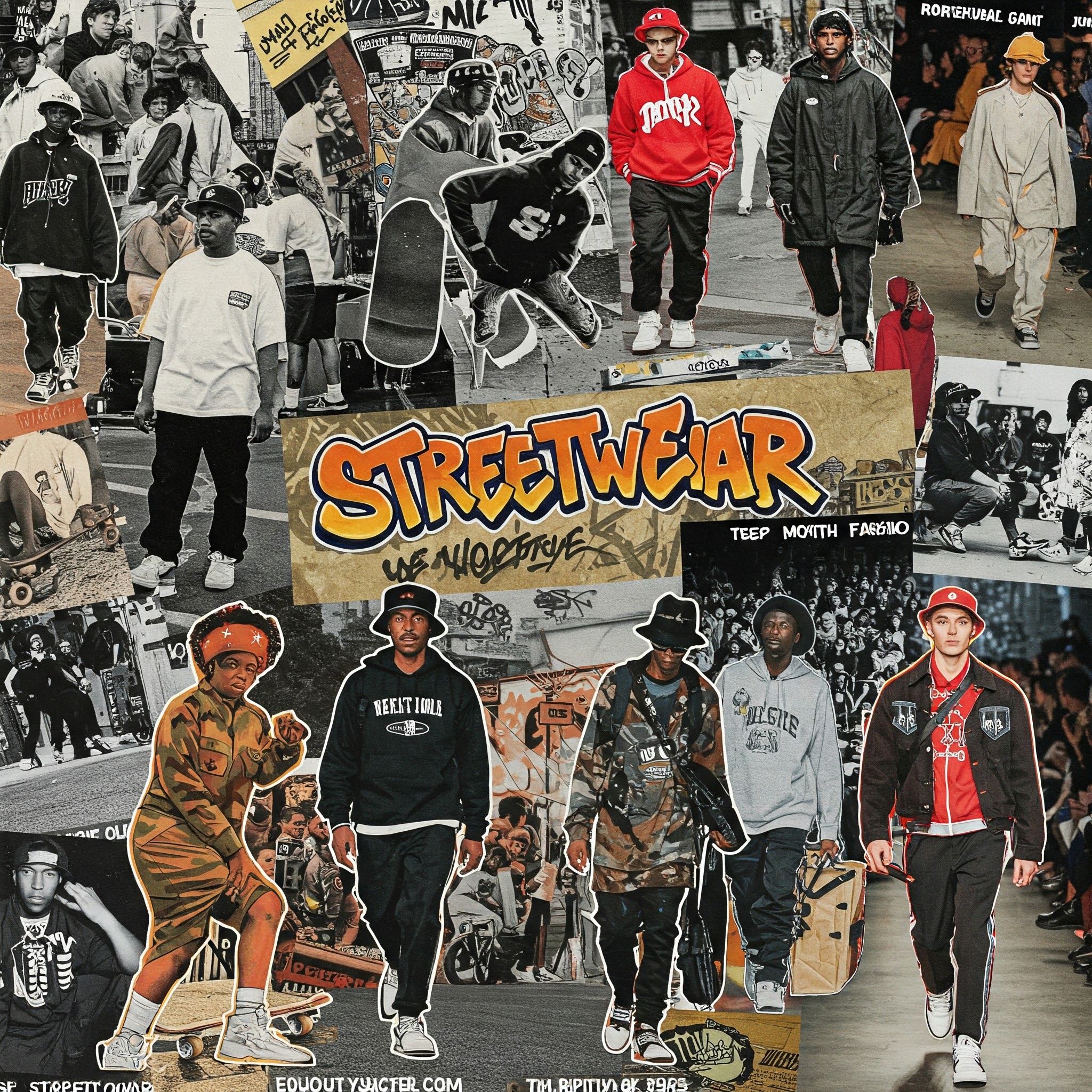Streetwear, once a niche subculture born from the fringes of skateboarding, hip-hop, and punk rock in the late 20th century, has undergone a remarkable transformation. It has not only permeated mainstream fashion but has also become a dominant force, influencing high-end designers and shaping the way people dress globally. Understanding this evolution requires tracing its roots, acknowledging its key players, and analyzing the factors that propelled it from the streets to the runways.
The genesis of streetwear can be largely attributed to the convergence of several cultural movements. Skateboarders in Southern California, seeking functional yet stylish clothing that could withstand the rigors of their activity, gravitated towards durable sneakers, comfortable tees, and relaxed denim. Simultaneously, the burgeoning hip-hop scene in New York City embraced athletic wear and bold graphics as expressions of identity and cultural pride. Punk rock, with its DIY ethos and anti-establishment attitude, contributed elements of deconstruction, customization, and rebellious slogans. These disparate yet interconnected subcultures laid the foundation for what would eventually become known as streetwear.
Early streetwear brands emerged from these scenes, often driven by individuals with a passion for their respective cultures. Visionary figures like Shawn Stussy, who began by selling hand-printed t-shirts to surfers in the early 1980s, and James Jebbia, who founded Supreme in 1994 as a skate shop that quickly gained cult status, were instrumental in shaping the aesthetic and ethos of streetwear. These brands prioritized authenticity, community, and limited-edition releases, fostering a sense of exclusivity and desirability among their core audiences.
The internet and social media played a pivotal role in the globalization and mainstreaming of streetwear. Platforms like Instagram provided a visual stage for individuals to showcase their personal style, often featuring coveted streetwear pieces. This created a global community of enthusiasts, transcending geographical boundaries and accelerating the spread of trends. The rise of sneaker culture, fueled by limited-edition collaborations between athletic brands and designers, further amplified the hype and collectibility associated with streetwear.
Luxury fashion houses, initially dismissive of streetwear’s casual and often rebellious aesthetic, gradually began to recognize its growing influence and commercial potential. Collaborations between high-end brands and streetwear icons became increasingly common, blurring the lines between luxury and street style. The appointment of Virgil Abloh, founder of Off-White, as the artistic director of Louis Vuitton’s menswear in 2018 marked a significant turning point, signaling the full integration of streetwear sensibilities into the highest echelons of fashion.
Several factors contributed to this shift. The desire for comfort and practicality in everyday wear resonated with a wider audience. Streetwear’s emphasis on self-expression and individuality appealed to a generation that valued authenticity and personal style over traditional notions of formality. Moreover, the scarcity model employed by many streetwear brands, with their limited releases and “drop” culture, created a sense of urgency and desirability that traditional luxury brands began to emulate.
Today, streetwear encompasses a vast and diverse range of styles, from minimalist athleisure to bold, graphic-heavy ensembles. Sneakers remain a cornerstone, but the aesthetic has expanded to include everything from hoodies and track pants to tailored pieces and high-fashion accessories, often styled in unexpected and innovative ways. The influence of streetwear can be seen across all levels of the fashion industry, from fast fashion retailers to haute couture runways.
However, the mainstreaming of streetwear has also sparked debate about its authenticity and cultural roots. Some argue that its commercial success has diluted its original spirit and that the focus on hype and consumerism has overshadowed its connection to subcultures. Others maintain that its evolution is a natural progression, allowing its influence to reach a wider audience and fostering creativity and innovation within the fashion landscape.
In conclusion, the journey of streetwear from a niche subculture to a global phenomenon is a testament to its enduring appeal and its ability to adapt and evolve. Fueled by cultural movements, visionary individuals, and the power of the internet, it has irrevocably shaped the fashion industry, challenging traditional hierarchies and redefining what constitutes contemporary style. While its future trajectory remains to be seen, the impact of streetwear on the way we dress is undeniable, solidifying its place as a significant and dynamic force in the world of fashion.

